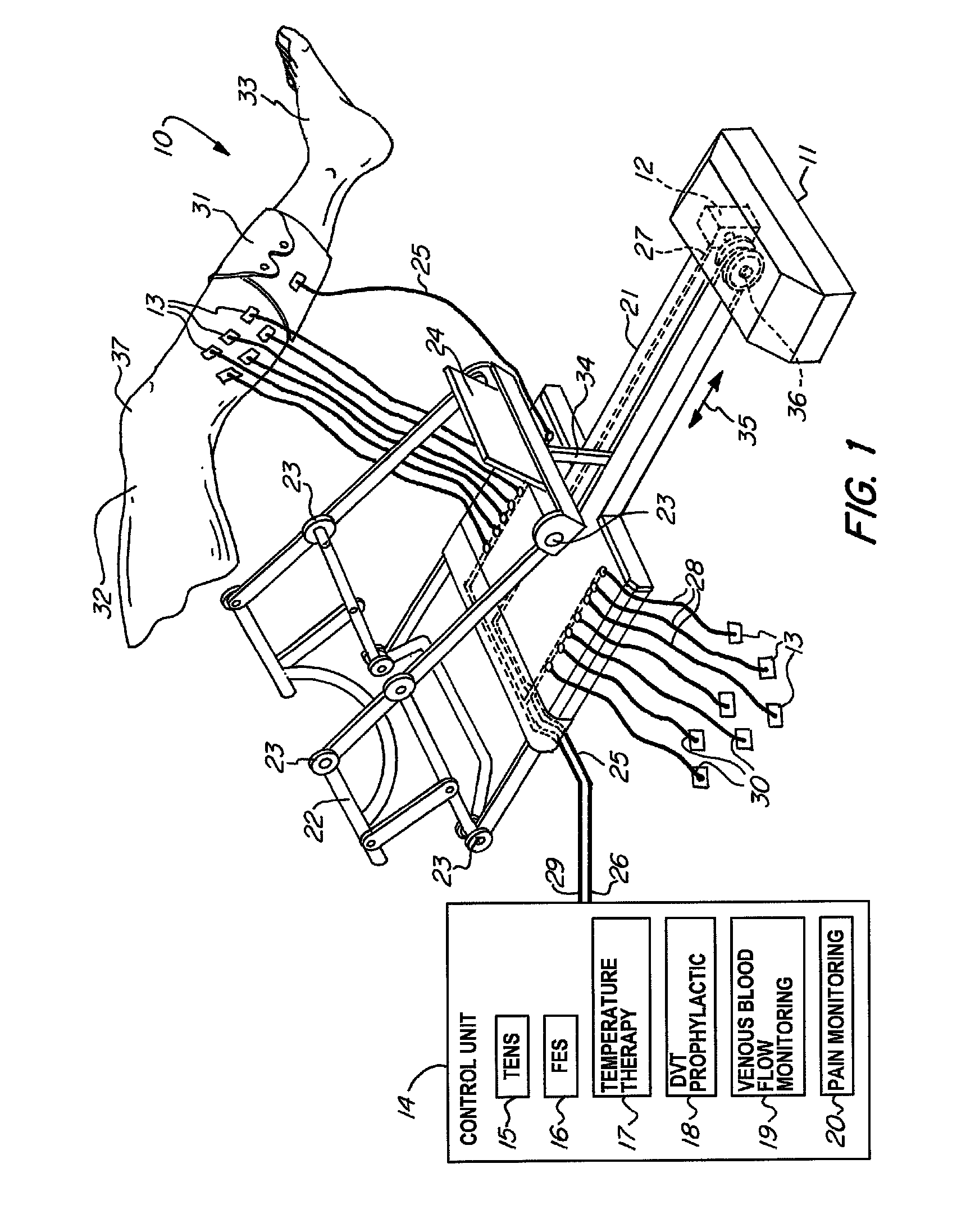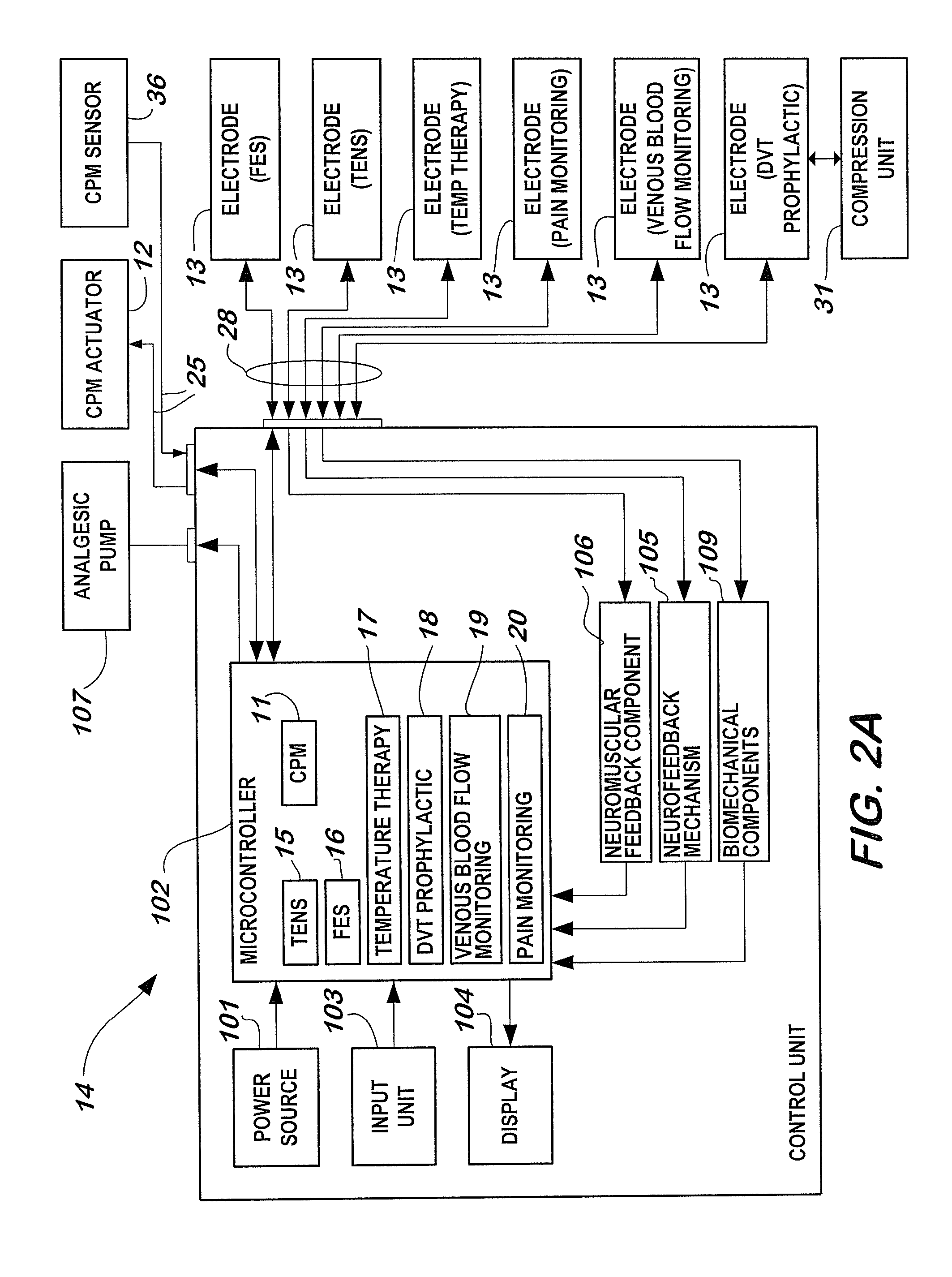Orthosis for range of motion, muscular and neurologic rehabilitation of the lower extremities
a lower extremity and orthosis technology, applied in the field of rehabilitation devices, can solve the problems of limited range of motion in the joint, extreme pain, and attempt at joint motion, and achieve the effects of preventing muscle atrophy, synergistic rehabilitation and pain management of postoperative limbs, joints, muscles and other bodily parts, and maximizing the effectiveness of therapeutic treatmen
- Summary
- Abstract
- Description
- Claims
- Application Information
AI Technical Summary
Benefits of technology
Problems solved by technology
Method used
Image
Examples
Embodiment Construction
[0036]As used herein, the terms “electrode” and “electrodes” encompass electrical coils, electrical plates, electrical conductors, conductive fabrics and gels, and any other conductive materials and devices.
[0037]Referring to the figures in detail and first to FIG. 1, there is shown an exemplary embodiment of a non-invasive rehabilitation machine with electrodes for providing several modalities to a patient's bodily parts, such as a joint and limb. FIG. 1 illustrates the rehab apparatus 10 with a CPM device 11 and electrodes 13, wherein the CPM device 11 is adapted to receive leg 32 and the electrodes 13 are placed on the leg 32. In order to provide passive motion support, the CPM device 11 has a frame 21, one or more support members 22, and at least one actuator 12, wherein the one or more support members 22 hold and secure the leg 32 to the frame 21. The actuator 12 disposed within the frame 21 is operably connected to the one or more support members 22 at a base 34. As the actuat...
PUM
 Login to View More
Login to View More Abstract
Description
Claims
Application Information
 Login to View More
Login to View More - R&D
- Intellectual Property
- Life Sciences
- Materials
- Tech Scout
- Unparalleled Data Quality
- Higher Quality Content
- 60% Fewer Hallucinations
Browse by: Latest US Patents, China's latest patents, Technical Efficacy Thesaurus, Application Domain, Technology Topic, Popular Technical Reports.
© 2025 PatSnap. All rights reserved.Legal|Privacy policy|Modern Slavery Act Transparency Statement|Sitemap|About US| Contact US: help@patsnap.com



